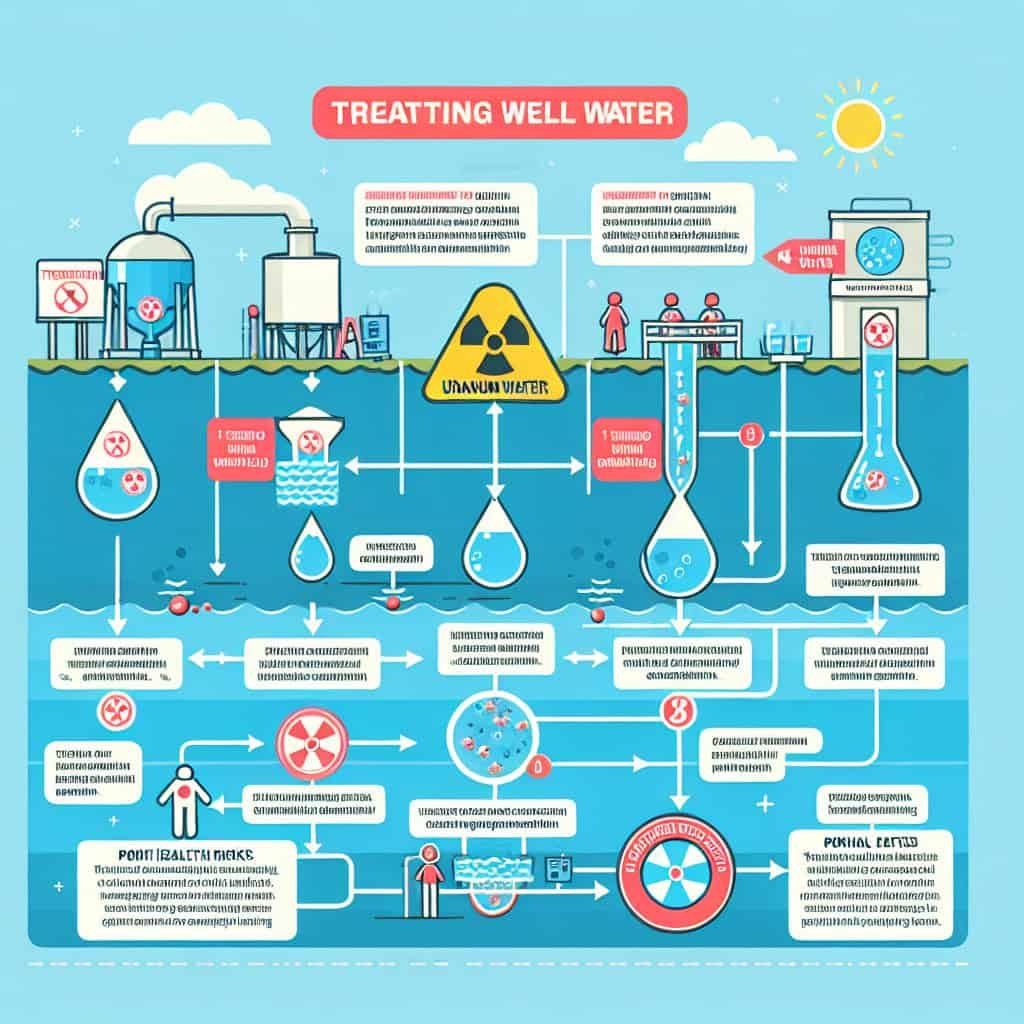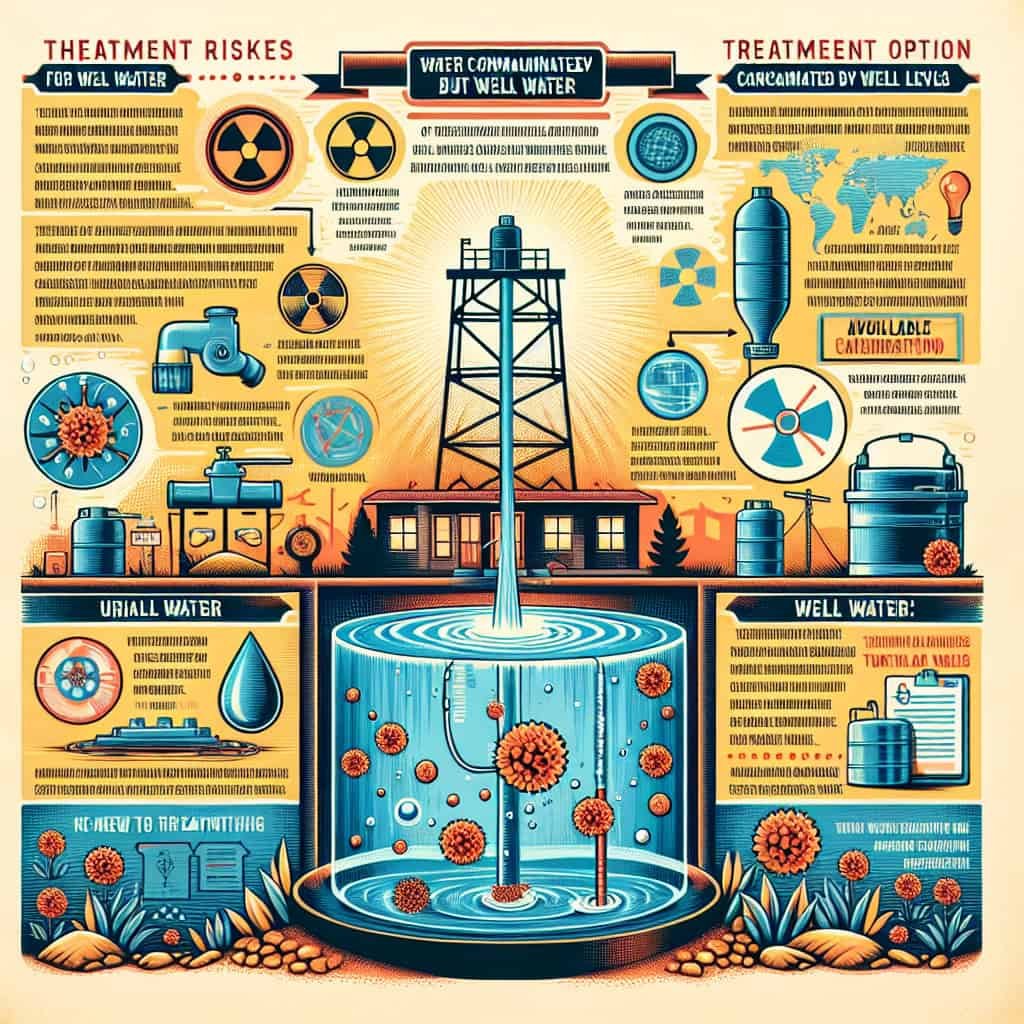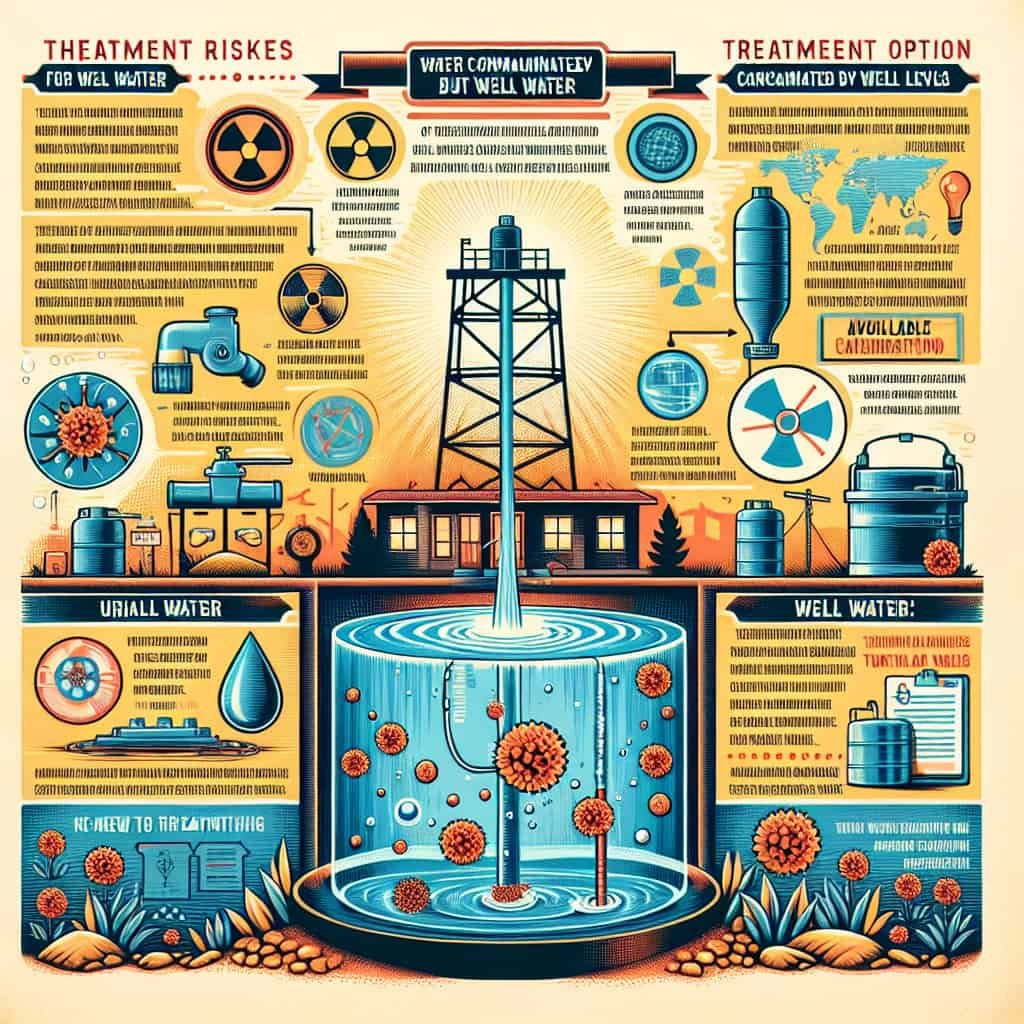If you’re one of the unfortunate individuals dealing with high uranium levels in your well water, despair not, for there is hope! In the following article, we will explore the various treatment options that are available to tackle this issue head-on. With a friendly approach, we will discuss the methods and technologies that can be utilized to ensure you have access to safe and clean drinking water. So, let’s dive right into the world of well water treatment and discover the solutions that can help alleviate your concerns.

1. Testing and Identifying Uranium Levels
1.1 Testing well water for uranium
When it comes to testing well water for uranium, it is important to start with regular monitoring. Ideally, well water should be tested at least once every three to five years to ensure the safety of its contents. There are various testing kits available that can help you determine the levels of uranium in your well water. These kits typically include instructions on how to collect a water sample and send it to a certified laboratory for analysis.
1.2 Identifying high uranium levels
Identifying high uranium levels in well water can be concerning, but it is crucial to take immediate action to protect yourself and your family. Once you receive the test results, you can compare them with the acceptable uranium levels set by the Environmental Protection Agency (EPA), which is typically 30 micrograms per liter (µg/L). If your well water exceeds this limit, it indicates high uranium levels and calls for further action to ensure your health and safety.
2. Health Risks Associated with High Uranium in Well Water
2.1 Uranium’s impact on human health
High uranium levels in well water can have detrimental effects on human health. When consumed in excess, uranium can pose risks such as kidney damage, increased risk of cancer, and damage to the reproductive system. It is important to note that prolonged exposure to high levels of uranium in drinking water can lead to chronic health issues. Therefore, it is crucial to address the issue promptly through appropriate treatment methods.
2.2 Long-term effects of uranium exposure
In addition to immediate health risks, prolonged exposure to high uranium levels in well water can have long-term effects on individuals. Studies have suggested that long-term exposure to uranium may contribute to the development of diseases such as lung cancer, bone cancer, and kidney damage. Taking steps to reduce uranium levels in your well water is essential for safeguarding your long-term health and that of your loved ones.
3. Basic Water Treatment Methods
3.1 Filtration
Filtration is a commonly used water treatment method that can effectively remove uranium from well water. Various filtration systems such as activated carbon filters, granular media filters, and multimedia filters can be used for this purpose. These filters work by trapping uranium particles and preventing them from entering your drinking water supply.
3.2 Reverse osmosis
Reverse osmosis is another highly effective treatment method for removing uranium from well water. This process involves forcing water through a semi-permeable membrane, which blocks the uranium particles and allows clean water to pass through. Reverse osmosis systems are typically installed under the sink and can provide a reliable solution for treating well water with high uranium levels.
3.3 Distillation
Distillation is a water treatment method that involves heating the water to create steam and then condensing the steam back into liquid form. This process effectively removes contaminants, including uranium, from the water. While distillation can be a suitable treatment option, it is important to consider the energy requirements and costs associated with this method.
4. Advanced Treatment Options
4.1 Ion exchange
Ion exchange is an advanced treatment method that involves replacing uranium particles in water with harmless ions. This process uses a resin bed that attracts positively charged uranium ions, removing them from the water. Ion exchange systems can be highly effective in reducing uranium levels and are commonly used in commercial or larger-scale applications.
4.2 Activated alumina treatment
Activated alumina treatment is a specialized process that utilizes a porous, granular material called activated alumina to effectively remove uranium from water. The activated alumina acts as a filter, adsorbing the uranium particles as the water passes through. This treatment method is widely recognized for its ability to significantly reduce uranium levels, making it a suitable solution for well water with high uranium concentrations.
4.3 Coagulation-flocculation
Coagulation-flocculation is a water treatment technique that involves adding chemicals to water to neutralize and aggregate impurities. Through this process, uranium particles in the water can be bound together, forming larger particles known as flocs. These flocs can then be easily removed through subsequent filtration methods, resulting in reduced uranium levels in the treated water.
4.4 Precipitation
Precipitation is commonly used as a water treatment method to remove uranium through the formation of insoluble compounds. By adjusting the pH and adding appropriate chemicals, uranium in the water can be precipitated into solid particles. These particles can then be removed through filtration or settling processes, providing an effective means of reducing the uranium content in well water.
4.5 Oxidation
Oxidation is a treatment method that involves adding oxidizing agents to the well water to convert soluble uranium into insoluble forms. This conversion allows for easier removal of uranium particles through subsequent filtration processes. Oxidation, combined with other treatment methods such as filtration or precipitation, can significantly reduce uranium levels in well water.

5. Combination Treatment Systems
5.1 Using multiple treatment methods
Combining different treatment methods can enhance the effectiveness of uranium removal from well water. For example, a combination of filtration, reverse osmosis, and ion exchange can provide a comprehensive approach to reducing uranium levels. By utilizing multiple treatment methods, you can ensure that your well water is thoroughly treated and meets the acceptable uranium limits for safe consumption.
5.2 Selecting the appropriate combination
When selecting a combination treatment system, it is essential to consider factors such as the initial uranium levels in your well water, water flow rate, and the availability of various treatment methods. Consulting with water treatment professionals can help you determine the most suitable combination of treatment methods for your specific situation. Their expertise can guide you in selecting a system that addresses your uranium concerns effectively.
6. Water Softeners and Uranium Removal
6.1 Role of water softeners
Water softeners primarily focus on removing minerals like calcium and magnesium from water, improving its overall quality for household use. However, some water softeners can also contribute to uranium removal due to their ion exchange mechanisms. While water softeners alone may not completely eliminate high uranium levels, they can be a beneficial addition to other treatment methods.
6.2 Ensuring effective uranium removal
To ensure that a water softener effectively removes uranium from your well water, it is important to consider certain factors. The regeneration process of the water softener should be optimized to facilitate the removal of uranium ions. Additionally, regular maintenance and monitoring of the water softener system are crucial to ensure that it continues to function efficiently in reducing uranium levels.

7. Regular Maintenance and Monitoring
7.1 Importance of maintenance
Once you have chosen a water treatment system to address high uranium levels in your well water, it is crucial to prioritize regular maintenance. Following the manufacturer’s maintenance guidelines and scheduling professional servicing will ensure that your system continues to function optimally. Regular maintenance helps prevent any potential issues that may compromise the effectiveness of your treatment system.
7.2 Monitoring uranium levels
In addition to maintenance, monitoring the uranium levels in your well water is vital for ongoing risk assessment. Regular testing can help you determine the effectiveness of your treatment system and ensure that the uranium levels remain within acceptable limits. By monitoring uranium levels, you can take necessary actions promptly if any changes or concerns arise.
8. Costs of Treatment Options
8.1 Factors affecting treatment costs
The costs associated with treating well water with high uranium levels can vary depending on several factors. These include the initial uranium levels in the water, the required treatment capacity, the chosen treatment methods, and any additional features or customization needed for your specific situation. It is important to consider both the upfront costs of installing a treatment system and the ongoing costs of maintenance and monitoring.
8.2 Comparing treatment methods
When comparing treatment methods, it is essential to evaluate not only their effectiveness in reducing uranium levels but also their overall costs. Consider factors such as the initial investment, ongoing maintenance requirements, and any potential energy consumption associated with each method. Consulting with water treatment professionals can help you determine the most cost-effective solution that meets your specific needs.

9. Environmental Considerations
9.1 Disposal of uranium-contaminated waste
While treating well water for high uranium levels is crucial for human health, it is equally important to consider the environmental impact of the treatment process itself. Proper disposal methods for uranium-contaminated waste should be followed to minimize environmental harm. Consult with local authorities or environmental agencies to ensure compliance with regulations and best practices for the disposal of uranium-contaminated waste.
9.2 Environmental impact of treatment methods
Different treatment methods have varying environmental impacts. It is important to consider factors such as energy consumption, chemical usage, and waste generation associated with each treatment method. Choosing treatment methods that prioritize sustainability and minimize their environmental footprint can contribute to both your well water’s quality and the overall health of the environment.
10. Regulatory and Legal Compliance
10.1 Compliance with drinking water standards
Complying with drinking water standards is crucial to ensure the safety and quality of your well water. The Environmental Protection Agency (EPA) and other regulatory bodies establish acceptable uranium limits in drinking water. It is essential to stay informed about the current regulations and standards in your region and ensure that your treatment system is capable of meeting these requirements.
10.2 State and federal regulations
In addition to drinking water standards, state and federal regulations may also govern the treatment and disposal of uranium-contaminated water. Familiarize yourself with regulations specific to your area to ensure legal compliance when addressing high uranium levels in your well water. Consulting with water treatment professionals who are well-versed in local regulations can help you navigate the legal aspects of treating your well water effectively.
In conclusion, well water with high uranium levels can pose significant health risks, making it crucial to implement appropriate treatment methods. Testing and identifying uranium levels, understanding the health risks associated with high uranium content, selecting suitable treatment options, regularly maintaining treatment systems, considering the costs and environmental impact, and ensuring compliance with regulatory requirements are all essential steps to ensure safe and quality well water for you and your family. By taking these measures, you can effectively address high uranium levels in your well water and enjoy peace of mind regarding your health and the environment.


